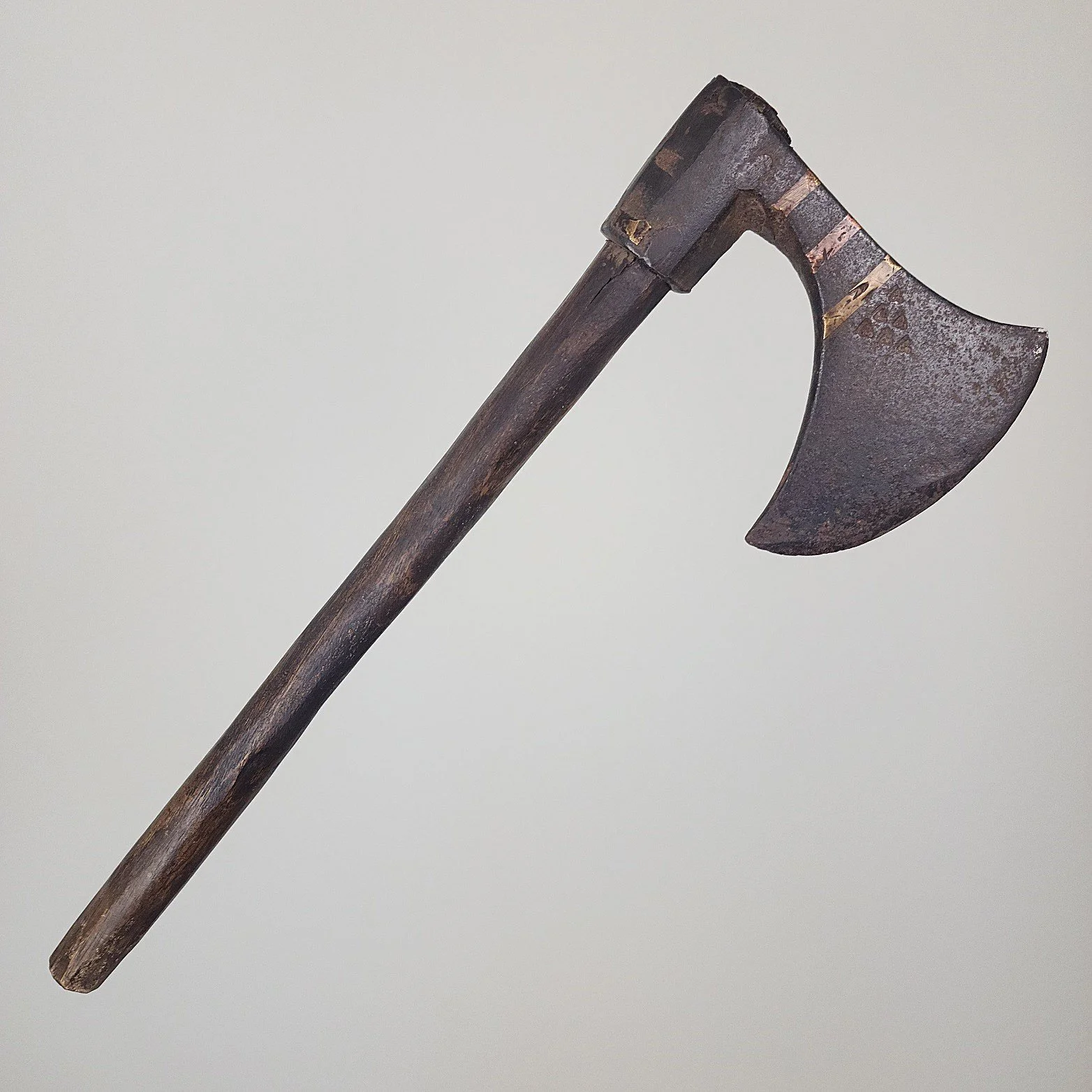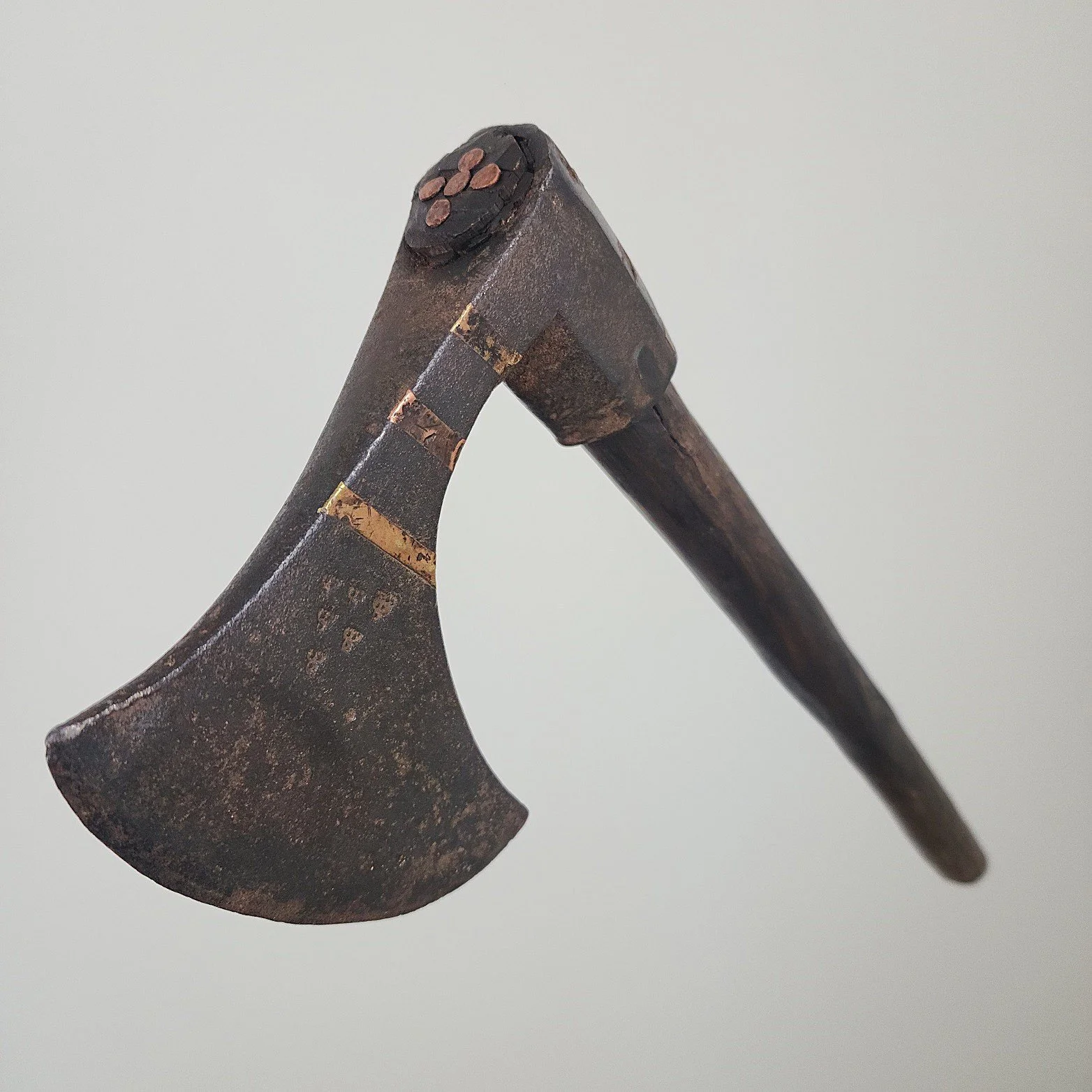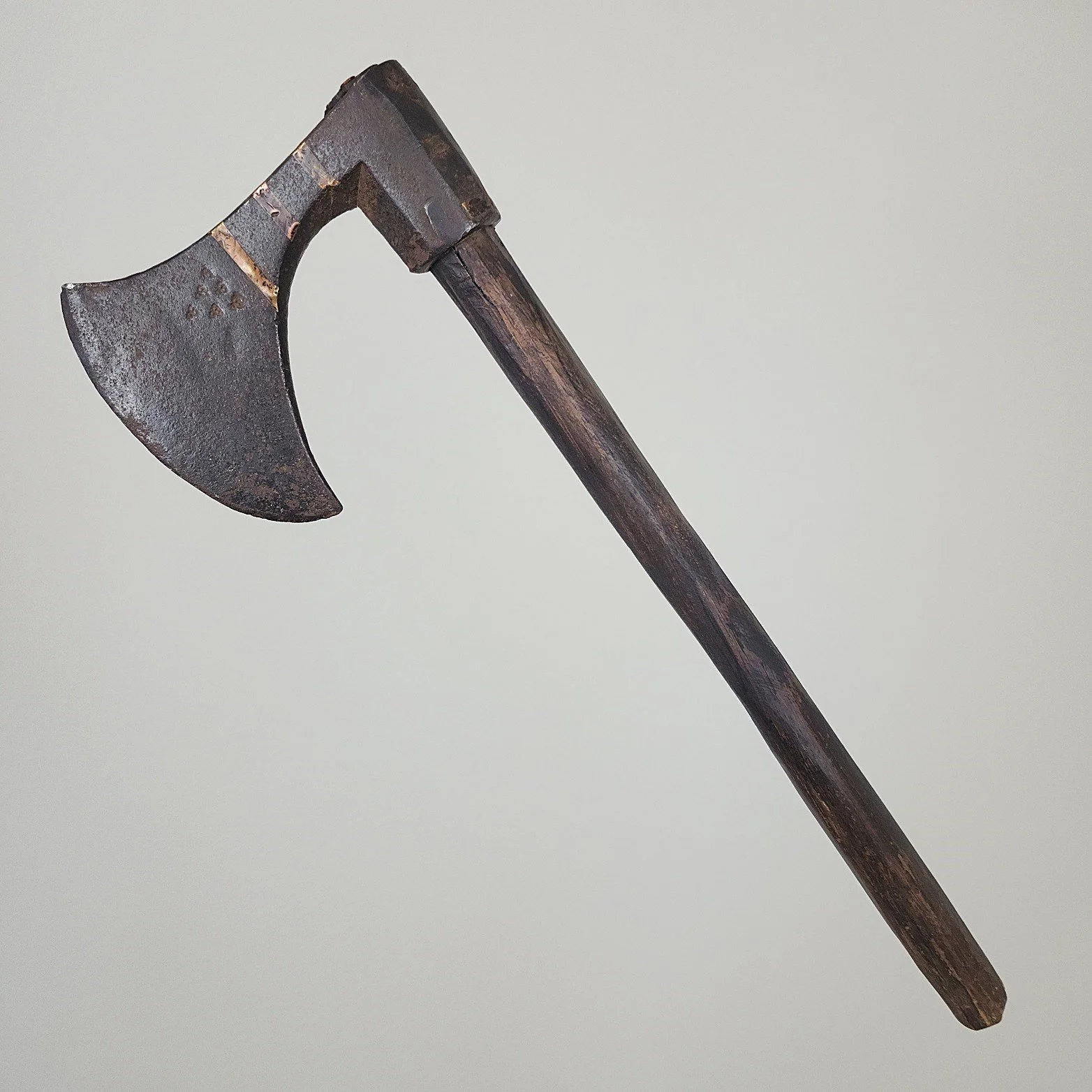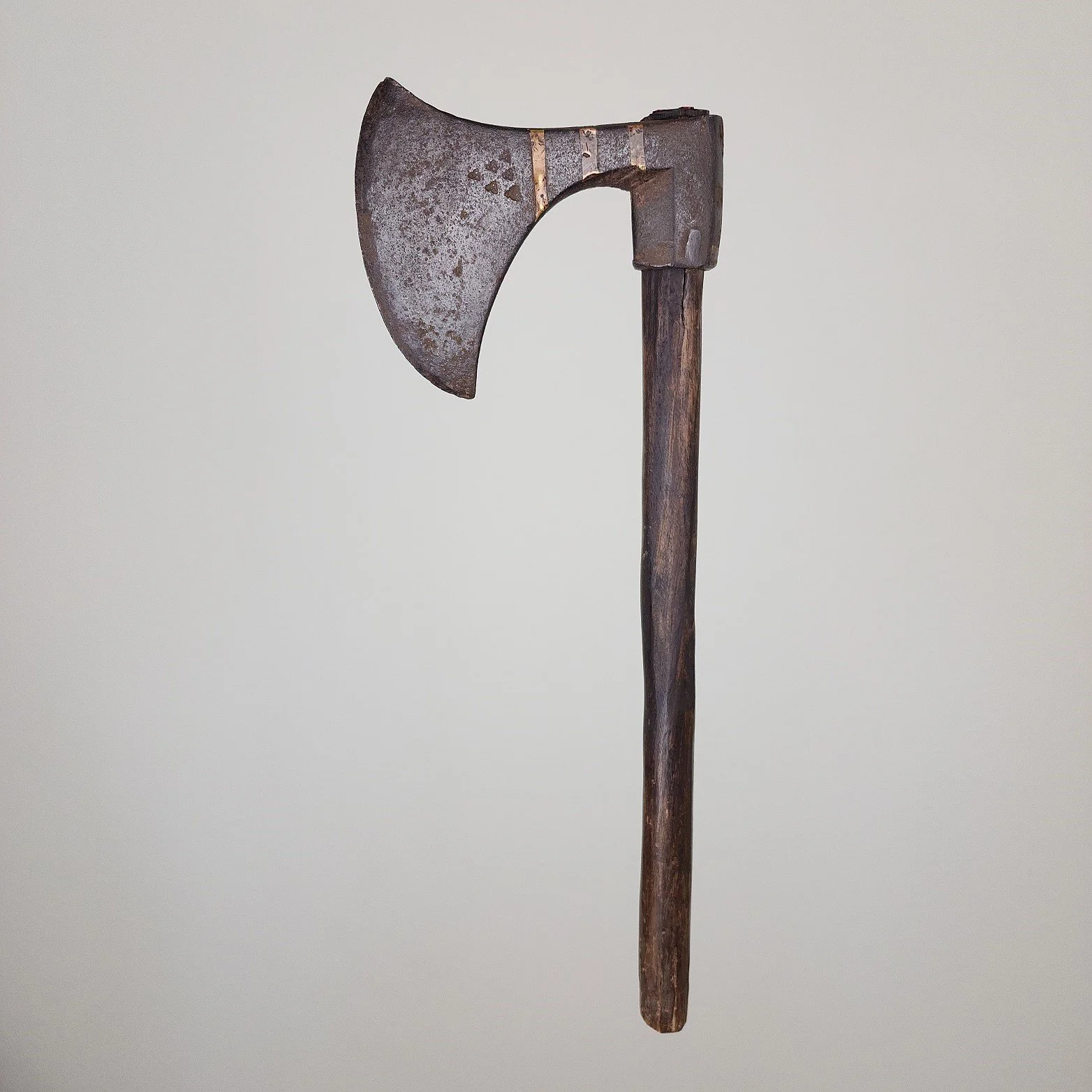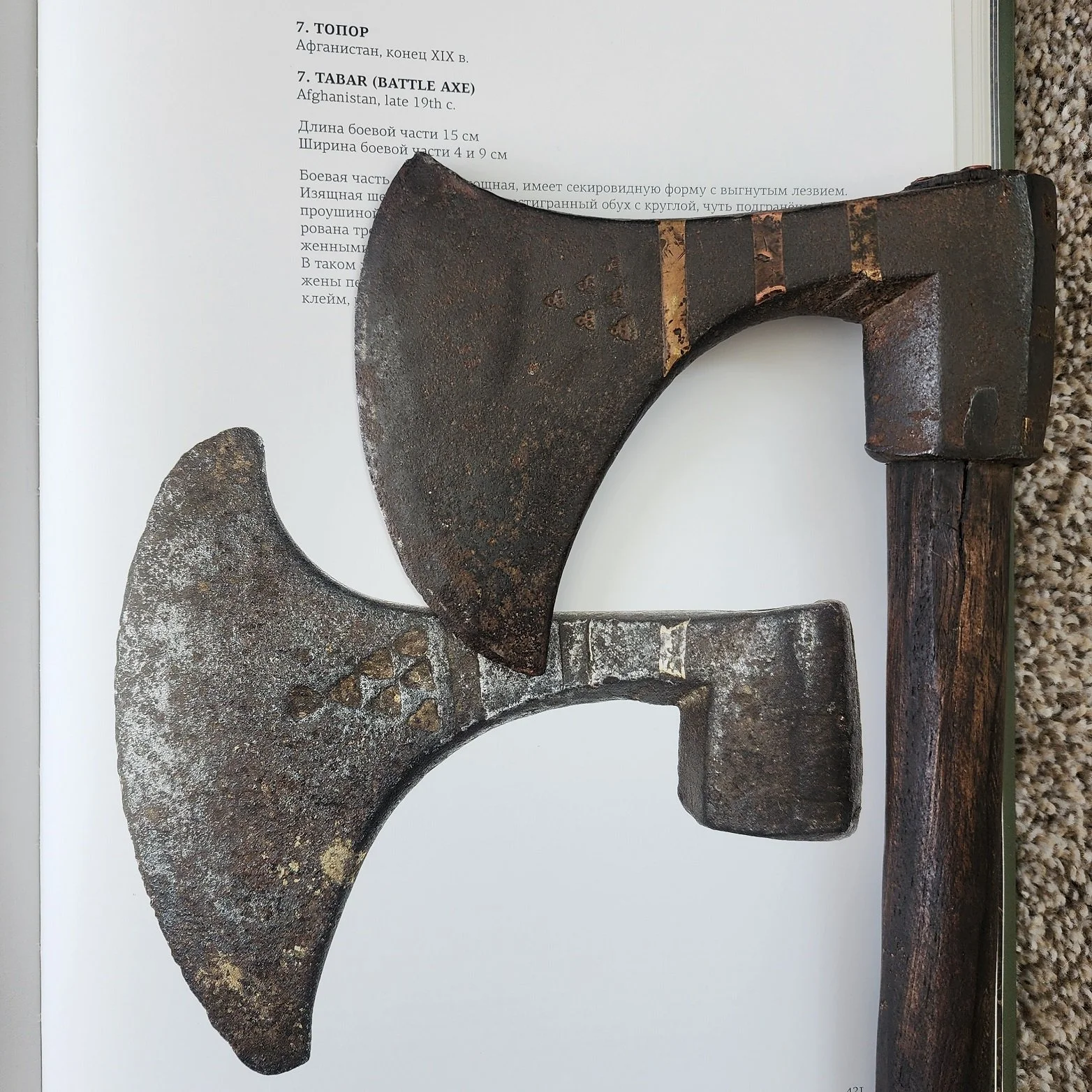Tabar
Tabar
Kanar Khel Clan / Afridi / Pashtun
Collected at the Ali Masjid Fort, Afghanistan - Punjab Province, British Raj (Ali Masjid Fort, Khyber Pakhtunkwa, Pakistan)
Last half of the 19th century
Iron, copper- brass, wood
Blade Length: 12,7cm
Blade Width: 15,2cm
Overall Length: 41,6cm
Collection Date: 2025
Collection Number: 457
Ex. American Private Collection (1980s - 2025)
A tabar axe from the Khyber Pass Region between Afghanistan and Pakistan. The head is made from one piece heavy iron, hatchet shaped with a curved edge. On each side of the cheek are three inlaid copper- brass strips decorated with six trefoil stamped motifs. Another four inlaid copper- brass strips were on the poll with only one strip now remaining. Wooden haft with dark patina from years of use. The top near the eye socket have five brass nails inserted into the top handle, while one nail is inserted on the bottom.
This type of 19th-century tabar axe is used in the Khyber Pass by the various Pashtun tribes including the Afridi. This specific example was field collected in the 1980s by the previous owner and remained in his personal collection up until 2025. While working for the university, he purchased this axe near the abandoned British Al Masjid Fort at the Pakistan end of the Khyber. A large field at the base of the hill was a gathering point for local tribes to trade on the route. This tabar was purchased there from a member of the Kanar Khel Clan, part of the Afridi tribe.
The last photograph compares this axe to an almost identical example found in the book, "Edged Weapons of Afghanistan," by Dmitry Miloserdov.
[1] Miloserdov, Dmitry Yurievich. 2019. “Edged Weapons of Afghanistan”. Pages 420 - 421


